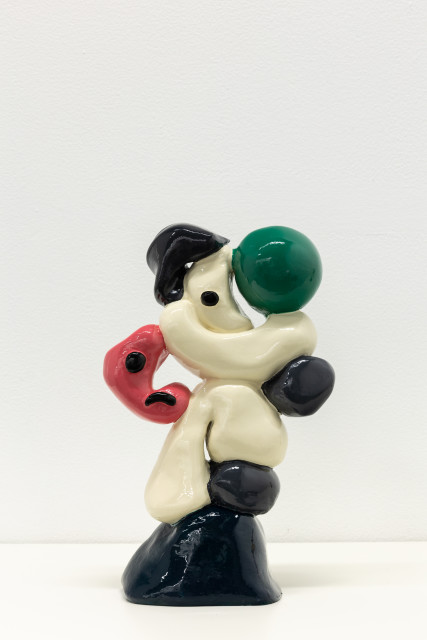The booth charts a dialogue between the work of artists Olaf Breuning (b. 1970 Switzerland) and Amir Khojasteh (b. 1988 Iran).
Through their exuberant exploration of vibrant color and strong forms, Olaf Breuning and Amir Khojasteh employ a direct and distinct visual vocabulary as a means to engage the viewer in a conversation that is centered around environmental and sociopolitical concerns within our contemporary society.
Their works suggest an instinctive and intuitive comprehension of these important topics; Breuning relies on universally understood symbols to encourage a deeper reflection of rapid technological advancement, and its current position in the historical timeline of our earth and mankind - whereas Khojasteh obscures subjects within his work through the use of expressive abstracted form as a means to bring greater focus on how political power has been portrayed throughout history.
Olaf Breuning’s paintings introduce new macroscopic and microscopic worlds in a multitude of bold, bright colors, and ultimately return to a discourse that focuses on the primary relationship between mankind and the environment. Breuning looks towards nature to touch on these topics, wherein his wide-scale compositions are created from a process of printing and pressing cut pieces of wood, as observed from their rough, organic textures and patterns. Breuning references this material throughout his paintings, incorporating biomorphic shapes found within nature as a contrast to our self-made technological surroundings.
Amir Khojasteh’s new sculptures touch on ideas familiar throughout his practice: the hunger for power and the corruption of individuals who seek it. Positioned across a table, Khojasteh’s polyester resin sculptures are sumptuous abstractions of material, carefully reconfigured in his thorough re-examination of propaganda from under the lens of art history. Upon observing the influential capacity of art in representations of authority, Khojasteh playfully manipulates their shapes as a citation to the exaggerated portrayals of these political figures or “fear-makers”.


